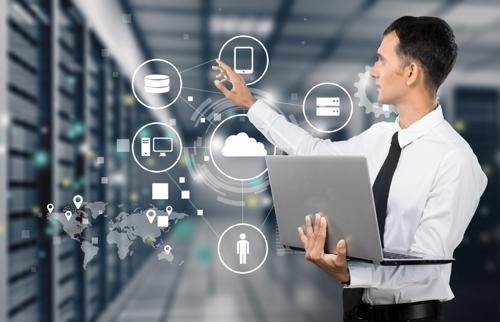
Using smart technologies for social good
By Max BurkhalterJanuary 3, 2022
As smart technology becomes more robust, prevalent and affordable, it brings near-limitless possibilities for businesses, social sector organizations, healthcare facilities, and the general public. IoT analytics forecasts predict that by 2025 there will be over 27 billion Internet of Things (IoT)-enabled devices in use across the globe. This increased computing power and connectivity will be instrumental in improving nearly every aspect of our society.
In the past, technological innovations have revolutionized workflow efficiencies, mechanized manual labor and increased longevity and quality of life for countless individuals. Today, powerful devices and artificial intelligence (AI) are fueling positive changes in critical aspects of our everyday lives, driving us toward a brighter tomorrow. As AI, robotics and the IoT become more widely available and perform more complex processes, let's take a look at how we can utilize these technologies for social good.

Education
Education is fundamental to the development of individuals and humanity at large, which is why it's essential to constantly update and improve our systems, curriculum and programs with new information and technologies. Teachers are already utilizing smart devices and machine learning in classrooms to accommodate students' needs, grade coursework and enhance the learning experience. In an age of remote learning, these tools have proved invaluable to educators by connecting them with students for distance learning lessons and assignments.
In the future, AI improvements will be able to identify correct answers to complex questions, requiring less human interpretation and enabling faster grading. Students will also utilize smart devices to provide better communication and track class assignments. As the next generation of students become increasingly digitally adept, integrating cutting-edge technology into the classroom will not only provide a foundation for computer literacy but also retain their attention.
Mental health chatbots
Depression is one of the most prevalent mental health illnesses, with around 280 million diagnosed cases worldwide, according to the World Health Organization. This is especially an issue in developing countries where more than 75% of people with mental health issues go untreated. However, recent advancements in machine learning are aiming to help alleviate this crisis through the use of chatbots.
Around the world, tech companies are utilizing AI chatbots to support and assist patients with mental health issues. While controversial, these bots offer an "impartial" ear without fear of stigma. Future advancements in machine learning and the growing prevalence of smart devices will undoubtedly improve their performance and increase their reach to provide an easy and affordable therapeutic service.
Nonprofit optimization
Like many businesses, nonprofit organizations are increasingly integrating smart devices and software into their workflows and daily operations to boost efficiency and free up staff to work on more important activities. Many organizations have already implemented information technology for tasks like data management, analysis and report generation. For now, smart devices and machine learning are limited to repetitive and mechanical jobs, but advancements in the field will expand their capabilities to automate complex processes and decision-making.
The expanding IoT also offers the social sector a plethora of tools to train staff, raise funds and reduce costs. More organizations are moving to the cloud to cut real-estate expenses and provide support for remote work models. According to Forbes, the rise in geofencing will allow nonprofits to target specific locations in their proximity while online donation drives offer a safe and far-reaching way to give.
Healthcare
During the pandemic, many hospitals have adopted the use of telemedicine to provide remote consultations, diagnoses and even treatment to patients. These IoT-enabled practices reduce the risk of possible infection while increasing efficiencies in patient throughput and allowing hospitals to reach a far broader population. Recent AI advancements have also enabled doctors to predict conditions like strokes and heart attacks and diagnose diseases like malaria, Alzheimer's and cancer. From wearable medical devices to AI-powered research, smart technology has a massive amount of potential to improve the healthcare industry in the coming years.
Virtual reality equipment will become a valuable category of tools for healthcare professionals providing remote emergency treatment. Combined with dexterous robotics, these tools may even allow doctors to perform complicated surgeries. Patients will receive life-saving wearable technology that can warn them about insulin levels, heart rhythm irregularities and much more. These IoT-connected devices also provide medical personnel with real-time updates on critical information to optimize response time and drastically improve patients' quality of life.
As smart technology continues its rapid evolution, we will continue to find new ways to utilize its capabilities for the benefit of society. To learn more about how Perle can expand your smart infrastructure, read our customer success stories.



